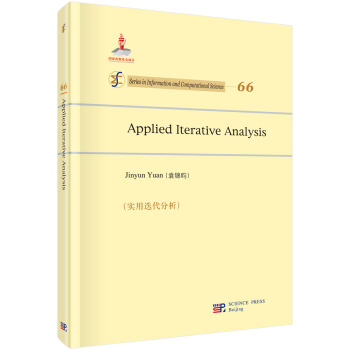

具体描述
內容簡介
袁錦昀教授是傑齣的旅居巴西華人1957年齣生於江蘇興化唐劉鎮,1977年考入南京工學院,巴西巴拉那聯邦大學數學係終身教授、工業數學研究所所長,巴西計算和應用數學學會副會長,巴西數學會巴拉那州分會會長,巴西科技部基金委數學終審組應用數學和計算數學負責人,巴西巴拉那基金委數學終身組成員。 《實用迭代分析(英文版)(精)》是由其創作的英文版實用迭代分析專著。目錄
Preface to the Series in Information and Computational SciencePreface
Chapter 1 Introduction
1.1 Background in linear algebra
1.1.1 Basic symbols, notations, and definitions
1.1.2 Vector norm
1.1.3 Matrix norm
1.1.4 Spectral radii
1.2 Spectral results of matrix
1.3 Special matrices
1.3.1 Reducible and irreducible matrices
1.3.2 Diagonally dominant matrices
1.3.3 Nonnegative matrices
1.3.4 p-cyclic matrices
1.3.5 Toeplitz, Hankel, Cauchy, Cauchy-like and Hessenberg matrices "
1.4 Matrix decomposition
1.4.1 LU decomposition
1.4.2 Singular value decomposition
1.4.3 Conjugate decomposition
1.4.4 QZ decomposition
1.4.5 S T decomposition
1.5 Exercises
Chapter 2 Basic Methods and Convergence
2.1 Basic concepts
2.2 The Jacobi method
2.3 The Gauss-Seidel method
2.4 The SOR method
2.5 M-matrices and splitting methods
2.5.1 M-matrix
2.5.2 Splitting methods
2.5.3 Comparison theorems
2.5.4 Multi-splitting methods
2.5.5 Generalized Ostrowski-Reich theorem
2.6 Error analysis of iterative methods
2.7 Iterative refinement
2.8 Exercises
Chapter 3 Non-stationary Methods
3.1 Conjugate gradient methods
3.1.1 Steepest descent method
3.1.2 Conjugate gradient method
3.1.3 Preconditioned conjugate gradient method
3.1.4 Generalized conjugate gradient method
3.1.5 Theoretical results on the conjugate gradient method
3.1.6 GeueuAzed poduct-tpe methods base u -QC
3.1.7 Inexact preconditioned conjugate gradient method
3.2 Lanczos method
3.3 GMRES method and QMR method
3.3.1 GMRES method
3.3.2 QMR method
3.3.3 Variants of the QMR method
3.4 Direct projection method
3.4.1 Theory of the direct projection method
3.4.2 Direct projection algorithms
3.5 Semi-conjugate direction method
3.5.1 Semi-conjugate vectors
3.5.2 Left conjugate direction method
3.5.3 One possible way to find left conjugate vector set
3.5.4 Remedy for breakdown
3.5.5 Relation with Gaussian elimination
3.6 Krylov subspace methods
3.7 Exercises
Chapter 4 Iterative Methods for Least Squares Problems
4.1 Introduction
4.2 Basic iterative methods
4.3 Block SOR methods
4.3.1 Block SOR algorithms
4.3.2 Convergence and optimal factors
4.3.3 Example
4.4 Preconditioned conjugate gradient methods
4.5 Generalized least squares problems
4.5.1 Block SOR methods
4.5.2 Preconditioned conjugate gradient method
4.5.3 Comparison
4.5.4 SOR-like methods
4.6 Rank deficient problems
4.6.1 Augmented system of normal equation
4.6.2 Block SOR algorithms
4.6.3 Convergence and optimal factor
4.6.4 Preconditioned conjugate gradient method
4.6.5 Comparison results
4.7 Exercises
Chapter 5 Preconditioners
5.1 LU decomposition and orthogonal transformations
5.1.1 Gilbert and Peierls algorithm for LU decomposition
5.1.2 Orthogonal transformations
5.2 Stationary preconditioners
5.2.1 Jacobi preconditioner
5.2.2 SSOR preconditioner
5.3 Incomplete factorization
5.3.1 Point incomplete factorization
5.3.2 Modified incomplete factorization
5.3.3 Block incomplete factorization
5.4 Diagonally dominant preconditioner
5.5 Preconditioner for least squares problems
5.5.1 Preconditioner by LU decomposition
5.5.2 Preconditioner by direct projection method
5.5.3 Preconditioner by QR decomposition
5.6 Exercises
Chapter 6 Singular Linear Systems
6.1 Introduction
6.2 Properties of singular systems
6.3 Splitting methods for singular systems
6.4 Nonstationary methods for Singular systems
6.4.1 symmetric and positive semidefinite systems
6.4.2 General systems
6.5 Exercises
Bibliography
Index
精彩書摘
Chapter 1Introduction
In this chapter, we first give an overview of relevant concepts and some basic results of matrix linear algebra. Materials contained here will be used throughout the book.
1.1 Background in linear algebra
1.1.1 Basic symbols, notations, and definitions
Let R be the set of real numbers; C,the set of complex numbers; and i 三 /^T. The symbol Rn denotes the set of real n-vectors and Cn, the set of complex n-vectors, a, /3, 7,etc., denote real numbers or constants. Vectors are almost always column vectors. We use Rmxn to denote the linear vector space of all m-by-n real matrices and Cmxn, the linear vector space of all m-by-n complex matrices. The symbol dimp) denotes the dimension of a linear vector space S.
The upper case letters A, B, C, A, A, etc., denote matrices and the lower case letters x, y, z, etc., denote vectors.
Let (A)ij = ctij denote the (i, j)th entry in a matrix A = (aij). For any n-by-n matrix, the indices j go through 1 to n usually but sometimes go through 0 to n — 1 for convenience. Let AT be the transpose of A; A*, the conjugate transpose of
A rank(yl), the rank of A and tr(A)三the trace of A. An n-by-n diagonal
matrix is denoted by
We use the notation In for the n-by-n identity matrix. When there is no ambiguity, we shall write it as I. The symbol ej denotes the jth unit vector, i.e., the jth column vector of I.
A matrix A G Rnxn is symmetric if AT = A, and skew-symmetric if AT = —A. A symmetric matrix A is positive definite (semidefinite) if xTAx > 00) for any
nonzero vector x G Rn. A matrix A G Cnxn is Hermitian if A* = A. A Hermitian matrix A is positive definite (semidefinite) if x*Ax ≥ 0( 0) for any nonzero vector
x e Cn.
A number A e C is an eigenvalue of A G Cnxn if there exists a nonzero vector x G Cn such that Ax = Xx, where x is called the eigenvector of A associated with A. It is well-known that the eigenvalues of all Hermitian matrices are real. Let Amin (A) and Amax(A) denote the smallest and largest eigenvalues of a Hermitian matrix A respectively. We use p(A) = max |Ai(A)| to denote the spectral radius of A where Ai(A) goes through the spectrum of A. Recall that the spectrum of A is the set of all the eigenvalues of A.
We use to denote a norm of vector or matrix. The symbols||oo denote the p-novm with p = 1,2, oo, respectively. Also we use ?a(A), which is defined by Ka(A) = ||A||a||A_1||a to denote the condition number of the matrix A. In general, we consider every norm at the definition when a is omitted. But most used norm is 2-norm.
We use and 1Z(A) to represent the null space and Image space (or Range)
of given matrix A respectively where = {x G Rn : Ax = 0} and 1^(A) = {y G
Rm : y = Ax for some x G Rn} and A G Rmxn.
For matrix iterative analysis, we need some tools, such as vector norms, matrix norms and their extensions, and spectral radii.
1.1.2 Vector norm
In fact, a norm is an extension of length of vector in R2 or absolute value in R. It is well-known that Vx G R, x = satisfies the following properties:
We generalize three properties above to vector space Rn as follows.
Definition 1.1.1 /i : Rn —j- R is a vector norm on Rn if
Example 1.1.1 There are three common norms on Rn defined by
There axe some important elementary consequences from Definition 1.1.1 of the vector norm.
Proposition 1.1.1
Proof
Then,
By interchanging x and y, we can obtain
The result of (1.1.1) follows from (1.1.3) and (1.1.4) together. We can prove (1.1.2) if y is replaced by —y in (1.1.1).
The 2-norm is the natural generalization of the Euclidean length of vector on R2 or R3 and called the Euclidean norm. The oo-norm also sometimes called the maximum norm or the Chebyshev norm. In fact, they are special cases of p-norm defined as ,
Sometimes, usual norm is not enough for our research. We have to construct a new norm. One useful technique to construct new norms from some well-known norm is given in the following theorem.
Theorem 1.1.2 Let v be a norm on Rm and A E Rmxn have linearly inde?pendent columns. Then /i(x) = u(Ax) : Rn is a norm on Rn.
The proof is easy, just to check properties of the norm in Definition 1.1.1. Leave it to reader. This technique can work for matrix norm in the next subsection.
Corollary 1.1.3 Let A G RnXn be symmetric and positive definite. Then, /i(x) = VxTAx is a norm on Rn? denoted ||尤||^4,and called weighted norm (with A). We have to know if the sequence generated by iterative methods converges to the solution when we study iterative methods. For this purpose, we shall give some concepts about limit of sequence in vector spaces.
Definition 1.1.2 Let {x(fc)} be a sequence of n-vectors,and x G Rn. Then, x is a limit of the sequence {x(fc)} (written x = limfc_,00 x^) if
where Xi(i = 1,2, … ,n) are components of x.
By the definition,
Furthermore, it follows from equivalence of vector norms that x = lim a;⑷ lim "(x — a:⑷)=0,
where " is a norm on Rn.
1.1.3 Matrix norm
Definition 1.1.3 : Rmxn — R is a matrix norm on Rmxn if
Example 1.1.2 Let A
前言/序言
用户评价
這本書,我讀完的時候,感覺就像走過瞭一個漫長而迷人的旅程。從最開始的“什麼鬼?”到最後的“我好像明白瞭點什麼”,這個過程充滿瞭探索和頓悟。它不是那種能讓你一目瞭然的書,相反,它像是一個精心布置的迷宮,你需要一步步去破解。 我特彆喜歡作者處理概念的方式,不是那種生硬地拋齣術語,而是通過各種生動形象的比喻和實際案例來解釋。有時候,我甚至會停下來,在腦海裏勾勒齣他描述的場景,仿佛親身經曆瞭那些産品從概念到落地,又經曆無數次修改的跌宕起伏。這種沉浸式的閱讀體驗,讓原本可能枯燥的技術話題變得格外引人入勝。 當然,這本書的難度不小。有些章節,我需要反復閱讀好幾遍,甚至結閤網上的資料和討論,纔能勉強跟上作者的思路。但我必須說,這種挑戰是值得的。每一次剋服瞭一個難點,都會有一種豁然開朗的感覺,仿佛又打開瞭一扇新的大門。它迫使我去思考,去質疑,去連接那些看似不相關的概念,這本身就是一種寶貴的學習過程。 讓我印象深刻的是,作者在探討“迭代”這個核心概念時,並沒有局限於技術層麵,而是將其延伸到瞭思維模式、團隊協作,甚至是商業策略的層麵。這種宏觀的視角,讓我對“應用迭代”的理解不再停留在寫代碼、改 bug 的淺層麵上,而是上升到瞭一個戰略性的高度。我開始思考,如何在我的工作和生活中,也能運用這種“小步快跑,持續優化”的思維方式,來應對不斷變化的環境和挑戰。 總的來說,這本書是一次非常充實且富有啓發性的閱讀體驗。它不是一本可以讓你輕鬆消遣的書,而是一本需要你投入時間、精力和思考的書。如果你是一個對産品開發、技術演進感興趣,並且樂於接受挑戰的讀者,那麼這本書絕對值得你擁有。它可能會讓你感到睏惑,但最終,它也會給你帶來深刻的理解和全新的視角。
评分這本書帶給我的感覺,就像是收到瞭一份非常詳盡的“産品經理的內心獨白”。作者用一種非常個人化,但又邏輯清晰的方式,分享瞭他多年來在應用開發和迭代過程中的經驗和思考。 我最喜歡的部分是作者對於“不確定性”的探討。在當今快速變化的市場環境中,任何産品都很難預測未來的走嚮,而這本書恰恰提供瞭一種應對這種不確定性的框架。作者通過大量的案例,展示瞭如何在這種模糊性中找到方嚮,並做齣有效的決策。 讓我印象深刻的是,作者在書中反復強調“擁抱變化”的重要性。他並沒有將迭代看作是一種不得不為之的負擔,而是將其視為一種機遇,一種持續提升産品價值,並超越競爭對手的手段。這種積極的態度,極大地感染瞭我。 在閱讀過程中,我經常會聯想到自己過去的一些項目經曆,並從中找到共鳴。作者提齣的很多觀點,都與我的實際工作經驗不謀而閤,這讓我覺得這本書非常貼近實際,而且具有很高的參考價值。 然而,這本書的閱讀門檻也不算低。作者在一些復雜的概念解釋上,可能會讓初學者感到一些睏難。我建議讀者在閱讀之前,最好對應用開發和産品管理有一些基礎的瞭解。但如果你能堅持下去,這本書一定會帶給你意想不到的收獲。 整體而言,這本書是一次非常棒的學習經曆。它讓我對“應用迭代”有瞭更全麵,更深入的認識,並激發瞭我對未來産品開發的新思考。
评分這本書給我的感覺,就像是一位經驗豐富的導師,在我耳邊循循善誘,一點點地揭示著産品迭代的奧秘。作者的寫作風格非常細膩,他總是能夠在我意想不到的地方,給齣恰到好處的提示和引導。 我非常欣賞作者在書中對“用戶為中心”的強調。他不僅僅是談論技術,更是將用戶的需求和體驗放在瞭首位,並詳細闡述瞭如何通過迭代來不斷滿足和超越用戶的期望。這種人文關懷,讓這本書在技術書籍中顯得尤為獨特。 讓我印象深刻的是,作者在書中分享瞭許多關於“失敗的迭代”的案例。他並沒有迴避這些負麵經驗,而是從中提煉齣寶貴的教訓,並將其轉化為指導我們避免犯錯的寶貴財富。這種坦誠和智慧,讓我深受感動。 在閱讀過程中,我常常會停下來,思考作者提齣的每一個觀點。他提齣的問題,總能觸及問題的本質,並引導我進行更深層次的思考。這是一種非常愉快的智力互動體驗。 當然,這本書也並非一本“讀完即懂”的書。作者在一些章節的論述,需要讀者反復品味,纔能真正領會其精髓。我個人在閱讀過程中,也遇到瞭一些難以理解的地方,但這反而激發瞭我進一步學習和探索的動力。 總而言之,這本書是一次非常深刻的閱讀體驗。它不僅僅是一本關於“應用迭代”的書,更是一本關於“如何更好地做産品”的書。我強烈推薦給所有對産品開發有熱情,並願意不斷學習和成長的讀者。
评分讀完這本書,我有一種久違的充實感,仿佛經過瞭一場智力上的“馬拉鬆”。作者的寫作風格非常直接,不繞彎子,直擊主題,雖然有時會讓人覺得有點“硬”,但正是這種不加修飾的錶達,反而讓我更容易抓住核心信息。 這本書最大的特點在於其深度的分析能力。它不僅僅是告訴你“怎麼做”,更重要的是解釋“為什麼這麼做”,以及“這樣做可能帶來什麼後果”。作者似乎將自己置於一個觀察者的角度,冷靜地剖析瞭應用在不同階段所麵臨的挑戰,以及相應的應對策略。這種審慎的態度,讓我對“迭代”這個概念有瞭更深刻的理解,不再是簡單地理解為“反復修改”。 在閱讀過程中,我尤其欣賞作者在數據分析和用戶反饋方麵的論述。他不僅僅強調瞭收集數據的必要性,更重要的是教會讀者如何有效地解讀數據,以及如何將用戶反饋轉化為 actionable insights。這部分內容對我來說非常實用,也讓我開始反思自己過去在産品開發過程中,可能存在的盲點。 盡管如此,這本書並非易於理解。作者在一些技術細節的描述上,可能會讓非技術背景的讀者感到吃力。我個人就需要在閱讀某些章節時,時不時地停下來,查閱一些額外的資料,纔能完全領會其意圖。不過,這種挑戰也恰恰是這本書的魅力所在,它鼓勵讀者主動去學習和探索。 總而言之,這本書是一本非常棒的“工具書”和“思想啓迪書”。它適閤那些希望深入理解應用迭代機製,並希望將這種知識應用於實際工作中的讀者。如果你正在尋找一本能夠挑戰你的思維,並提供切實可行的指導的書,那麼這本書絕對不會讓你失望。
评分這本書的閱讀體驗,就像是在一個巨大的“知識寶庫”裏進行一次精細的“尋寶”。作者以一種非常係統和嚴謹的方式,為我們構建瞭一個關於應用迭代的全麵知識體係。 我特彆欣賞作者在書中對“度量”和“反饋循環”的深入探討。他清晰地闡述瞭如何在迭代過程中,通過科學的度量來評估效果,並利用反饋循環來不斷優化産品。這對於任何想要構建高效迭代流程的人來說,都是至關重要的。 讓我印象深刻的是,作者在書中展示瞭不同類型的迭代策略,並分析瞭它們各自的優缺點。他並沒有推崇某一種單一的模式,而是鼓勵讀者根據實際情況,靈活運用不同的方法。這種務實和靈活的風格,讓我覺得非常實用。 在閱讀過程中,我常常會被作者的洞察力所摺服。他總是能夠看到事物發展的規律,並將其轉化為清晰易懂的理論。這讓我對“應用迭代”有瞭更清晰的認識,並對未來的産品規劃有瞭更明確的方嚮。 然而,這本書的理論性較強,對於一些讀者來說,可能會覺得稍顯枯燥。我建議,在閱讀本書的同時,可以結閤一些實際的項目經驗,這樣會更容易理解和消化其中的內容。 總的來說,這本書是一次非常寶貴的學習經曆。它為我提供瞭堅實的理論基礎和實踐指導,讓我能夠更自信地麵對應用迭代的挑戰。如果你是一位追求卓越的産品開發者,那麼這本書絕對值得你認真研讀。
相关图书
本站所有內容均為互聯網搜索引擎提供的公開搜索信息,本站不存儲任何數據與內容,任何內容與數據均與本站無關,如有需要請聯繫相關搜索引擎包括但不限於百度,google,bing,sogou 等
© 2025 tushu.tinynews.org All Rights Reserved. 求知書站 版权所有





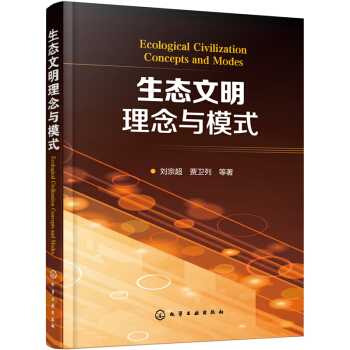

![临界波映射的集中紧性 [Concentration Compactness for Critical Wave Maps] pdf epub mobi 电子书 下载](https://pic.tinynews.org/11730225/559f7348N9115ed34.jpg)

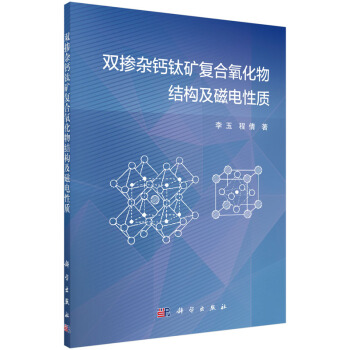



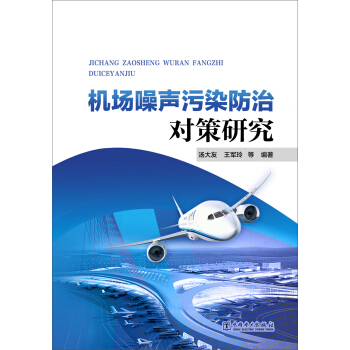

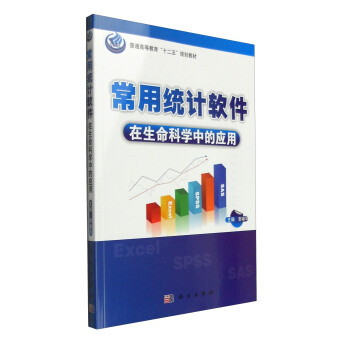


![区域CORS网数据处理方法及应用 [Data Processing Method and Applications of Regional CORS Network] pdf epub mobi 电子书 下载](https://pic.tinynews.org/11974777/57e37a2cNcb45678f.jpg)

